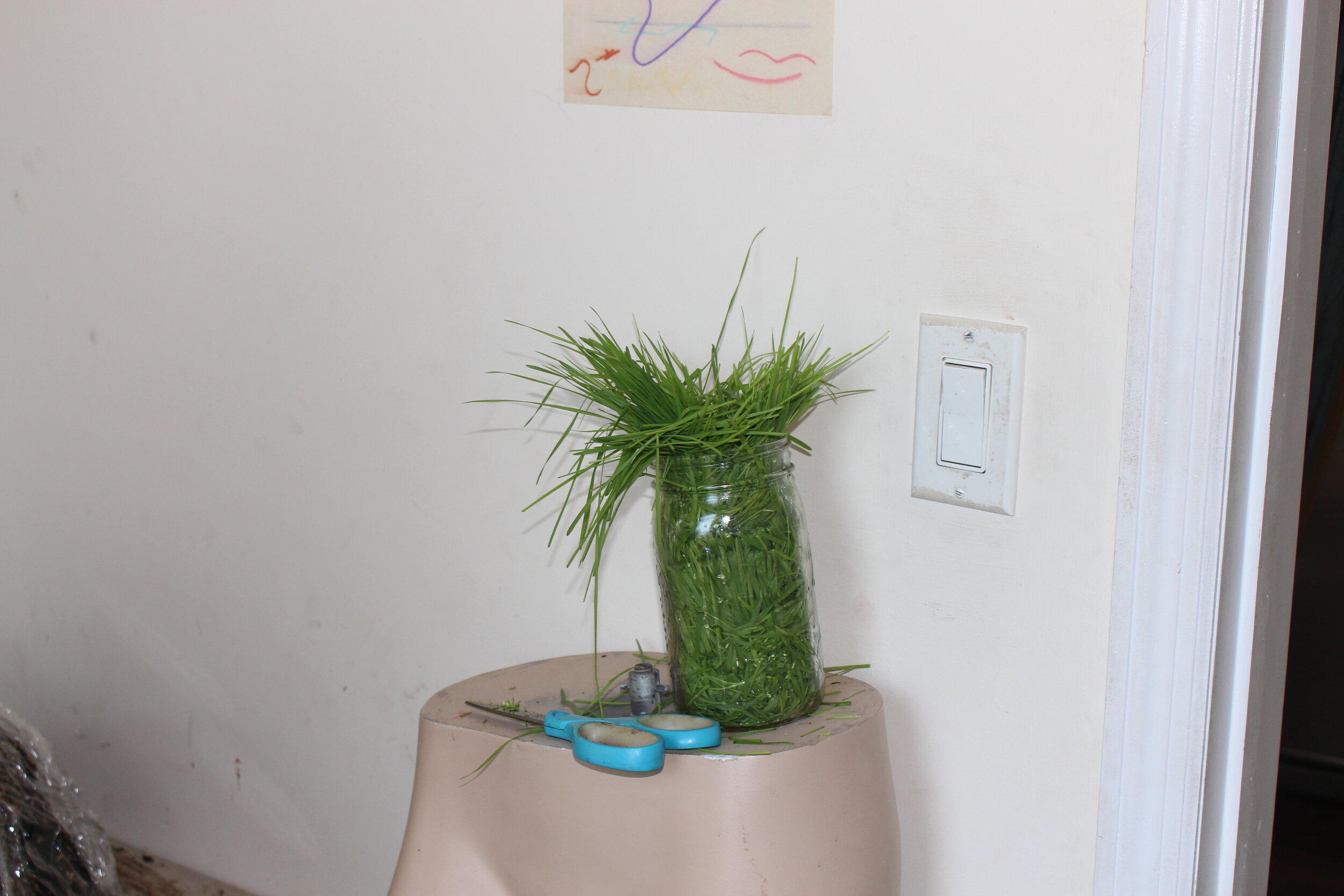PhotoBiomeSensorJuice
Phytobionic: Wearable Ecologies for Livable Futures
The earth collects biochemical information from the cellular shedding of the human maker. This data is stored as microbial worldings and evolves as the grass germinates within mycorrhizal architectures.
This information is returned to the human in the form of the green blood of sunlight, which is harvested from the body of the wearer and consumed fresh. Through this reciprocal exchange of microbial and biochemical ecologies, plant and human become an emergent assemblage.
Metaplasmic Natureculture worlding
The sensory suit, or wheatgrass organ, is constructed by pasting earth onto a mannequin, and then covering the earth with a mixture of potting mix, clay and wheatgrass seeds. During this process, skin flakes, hair, and members of the human maker’s microbiome, are added to the soil creating an emergent ecology comprised of human and soil associated microbes.
When the Sensory Organ contacts the human body, microbes and macromolecules are exchanged in an inter-being semiotic process. These migrating populations of microbes and amalgams of molecules imbued the blades of grass with information about both the wearer, as well as their shared environment.
The flavor the grass reflects the ecological health of the soil, and the health of the rhizome. Certain factors, such as irradiance, temperature, humidity, and soil nutrient content, have a direct on the chemical composition of the grass, while others, such as, acoustics, airborne particulates, and microbial inoculation through close contact with the human caretaker, have an indirect effect.
These small alterations of chemical composition affect the taste of the wheatgrass, allowing intuitive sensory information to reach the human caretaker’s gut microbiome, which informs its brain on the workings of the microcosm of the Sensory Organ.
My wheatgrass workstation on the LES NYC
Domestication of roots, Domestication of self








